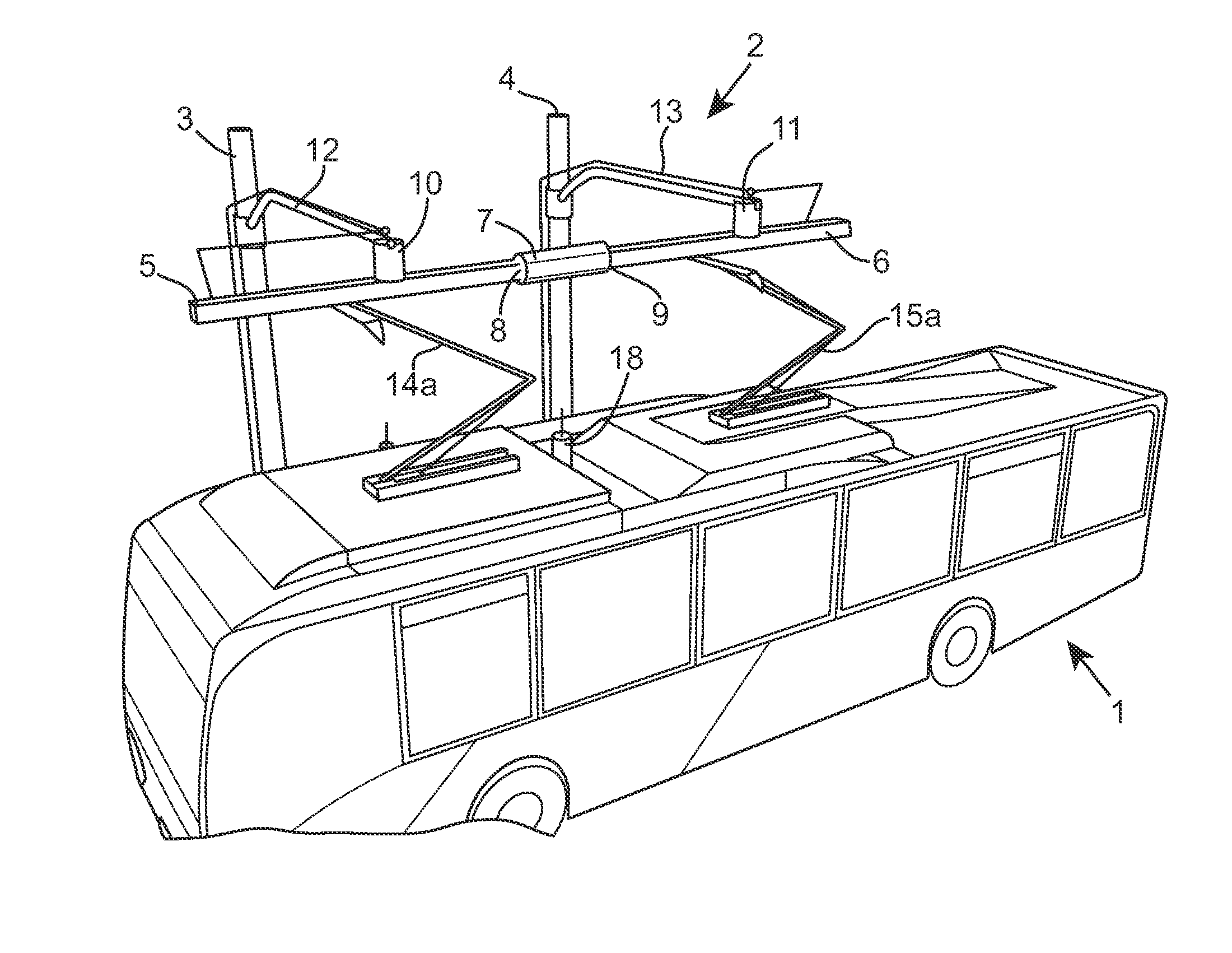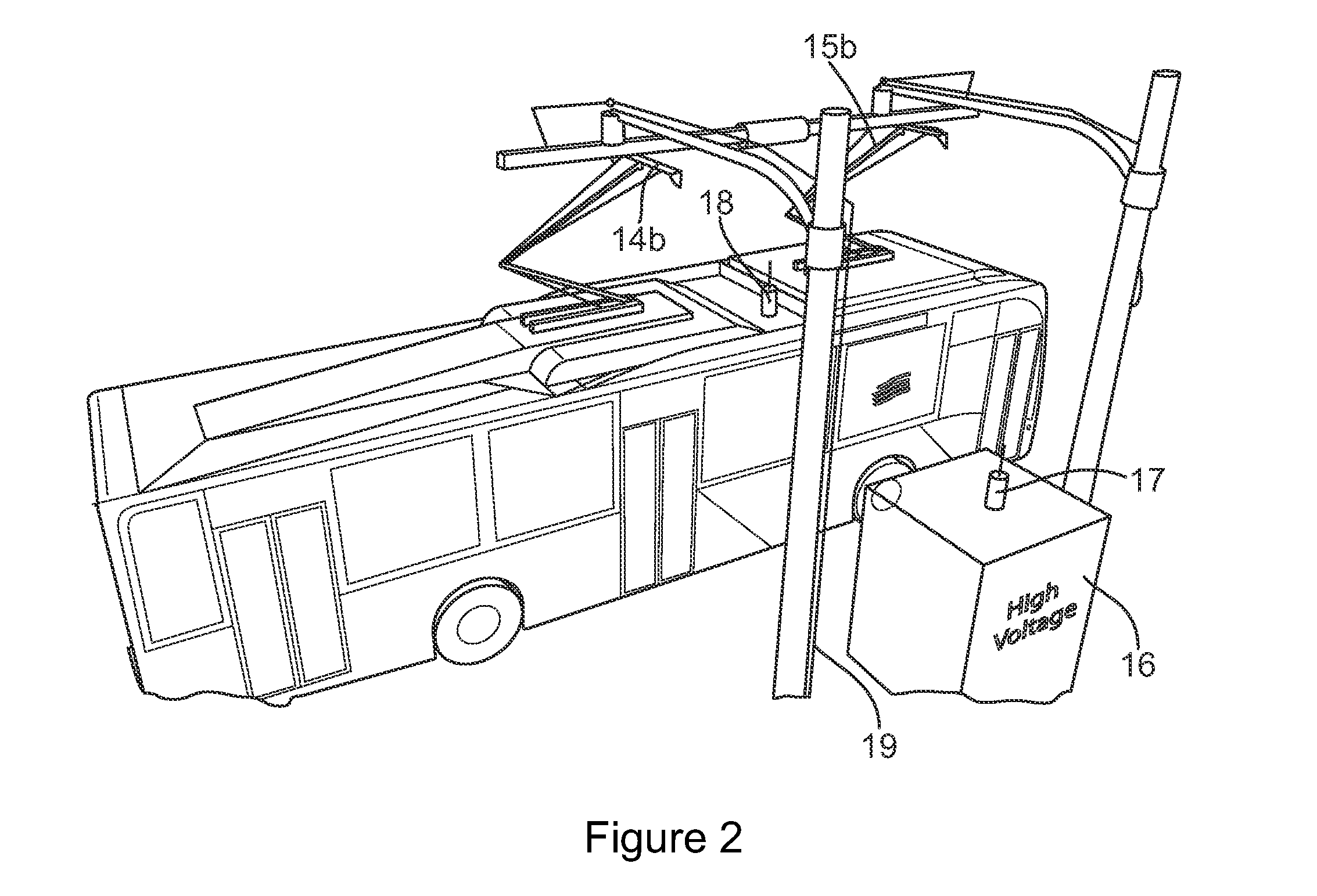Electric vehicle charging station and charge receiving arrangement for a vehicle
- Summary
- Abstract
- Description
- Claims
- Application Information
AI Technical Summary
Benefits of technology
Problems solved by technology
Method used
Image
Examples
Embodiment Construction
[0040]Referring firstly to FIG. 1, a bus is indicated at 1. The bus has pulled up alongside a charging station generally shown as 2. The charging station comprises two upright supports 3 and 4, each of which holds a charging element 5 and 6, which are positioned such that when the bus is in position, the charging elements are positioned along the longitudinal axis of the bus above the roof-line of the bus. The charging elements are separated by an insulating element 7, which separates the ends 8 and 9 of respective charging elements. The charging elements 5 and 6 connected to the upright supports by arms 12, 13 at an angle to the supports and there are insulators 10, 11 between the elements 5, 6 and the arms. The charging elements sit above the bus and can be moved so they come into contact with charge receiving members 14a, 15a which are attached to the top of the bus. The charging elements can be swung out horizontally from the curb although they may be in a fixed position. The ch...
PUM
 Login to View More
Login to View More Abstract
Description
Claims
Application Information
 Login to View More
Login to View More - R&D
- Intellectual Property
- Life Sciences
- Materials
- Tech Scout
- Unparalleled Data Quality
- Higher Quality Content
- 60% Fewer Hallucinations
Browse by: Latest US Patents, China's latest patents, Technical Efficacy Thesaurus, Application Domain, Technology Topic, Popular Technical Reports.
© 2025 PatSnap. All rights reserved.Legal|Privacy policy|Modern Slavery Act Transparency Statement|Sitemap|About US| Contact US: help@patsnap.com



